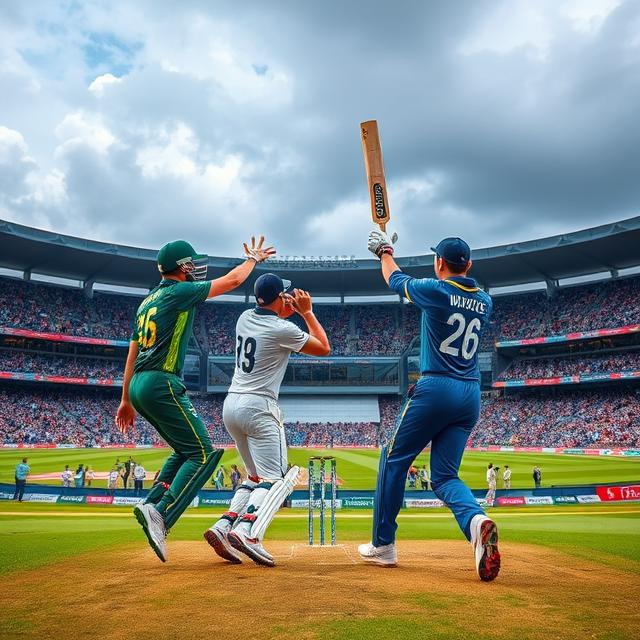Cricket, Pakistan, and the IPL: A Complex Relationship

Cricket, Pakistan, and the IPL: A Complex Relationship
The Indian Premier League (IPL) has become a global phenomenon, attracting millions of fans and generating billions in revenue. But amidst the glitz and glamour, a complicated relationship exists between the IPL and Pakistani cricket. This article delves deep into the nuances of this intricate connection, exploring the history, the controversies, and the future prospects for Pakistani players in the lucrative Indian league.
Unveiling a multifaceted story of ambition, struggle, and national pride. Is the IPL the golden ticket to success for Pakistani cricketers, or a pathway fraught with peril?
A History Marked by Suspense
The relationship between Pakistan and the IPL has evolved dramatically over the years. Initially, Pakistani players were a significant part of the IPL’s early success stories, bringing their talent and flair to the field. Their contributions to several IPL teams were crucial to their growth and development. They added an international flavor to the league, bringing their distinct style of play to the table. The presence of Pakistani players on the field brought a specific flavor, and there was much excitement around them. But, as time progressed, the dynamics of the relationship shifted significantly. This is a story that goes beyond the cricket pitch.
The Political Undercurrent
The delicate geopolitical relationship between India and Pakistan plays a significant role in this complex interplay. Political tensions and diplomatic frictions have often cast a shadow over the IPL’s attempts to attract Pakistani players. These tensions, unfortunately, have led to restrictions and limitations, influencing the willingness of both players and franchises to participate fully.
This political climate has complicated the participation of Pakistani players in the IPL. At times, these restrictions have limited their ability to showcase their talents on the global stage.
The Financial Pull and Push
Financial considerations are naturally a major driver in this equation. The IPL’s enormous financial clout attracts talented players from across the globe. For Pakistani cricketers, the allure of higher salaries and the potential for career advancement often outweigh concerns about political sensitivities. However, the financial incentives must be balanced against the potential risks.
The IPL presents a compelling opportunity for Pakistani players, but the potential rewards are often offset by the risks inherent in participating in a league often affected by external political and social pressures.
The Role of Domestic Cricket
A critical aspect of this situation lies in the condition of domestic cricket in Pakistan. If domestic conditions are weak or lacking, then the players may feel compelled to seek opportunities in leagues like the IPL. Conversely, a robust and competitive domestic structure could potentially lessen the appeal of the IPL to Pakistani players.
The quality of domestic cricket in Pakistan directly affects the player’s willingness and ability to focus on domestic cricket. This, in turn, has a profound impact on the overall development of Pakistan cricket.
The Path Forward: A Glimpse into the Future
The future of Pakistani players in the IPL hinges on several factors, including the evolution of political relations between India and Pakistan, the strength of Pakistan’s domestic cricket infrastructure, and the willingness of IPL franchises to navigate the complexities of this relationship. It’s a delicate balance that requires careful consideration.
While the political climate remains a significant hurdle, the IPL’s immense popularity and financial clout represent a powerful incentive for Pakistani players. The future trajectory of this relationship will depend on the ability of both sides to create a more supportive and inclusive environment for Pakistani cricketers.
The Impact on Pakistani Cricket
The absence or limited presence of Pakistani players in the IPL can have an indirect, yet significant, impact on Pakistan’s domestic cricket. The absence of top-tier competition can stunt the development of young Pakistani cricketers who may lack exposure to the highest levels of international play.
Conversely, the IPL’s presence could potentially foster greater investment in Pakistan’s domestic cricket facilities and infrastructure. This could be seen as a ripple effect that improves the quality of cricket throughout the country. This could be a very important factor in the future of cricket in Pakistan.
Beyond the Cricket Pitch: Cultural and Social Exchange
The IPL, while a professional sporting event, is also a significant platform for cultural exchange. The presence of Pakistani players can foster greater understanding and appreciation of Pakistani culture among fans and communities across the world.
Conclusion
The relationship between cricket, Pakistan, and the IPL is a fascinating case study in the interplay between sport, politics, and economics. The IPL represents a major opportunity for Pakistani cricketers to gain exposure, experience, and financial benefits. However, the complex political landscape and the need for a well-structured domestic cricket setup in Pakistan will determine whether the IPL becomes a true boon or a hurdle for the development of cricket in Pakistan.
Ultimately, the future trajectory depends on a delicate balance between national interests, sporting ambition, and the desire to foster international understanding and cooperation. It is a multifaceted problem that requires sustained effort to find a lasting solution. The potential rewards are significant, but the challenges are significant as well.
Further research into the specific impact of the IPL on Pakistan’s cricket infrastructure and player development, as well as in-depth case studies of the experiences of Pakistani players in the IPL, can lead to a deeper understanding of this multifaceted issue.
It is important to recognize that this is a dynamic situation. It is crucial to continue monitoring and analyzing the developments in this area to gain a more thorough understanding of the evolving relationship between Pakistan, cricket, and the IPL.
This is a story that warrants further exploration. It is a compelling narrative about national pride, individual aspiration, and the complexities of international sports.